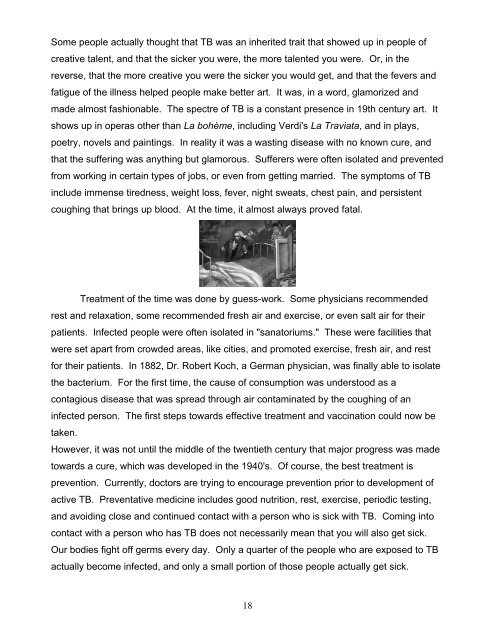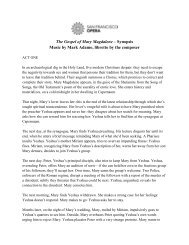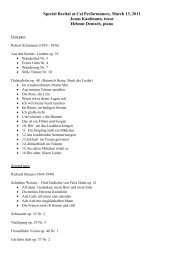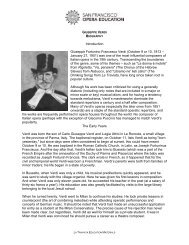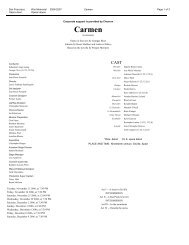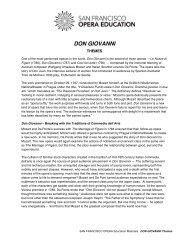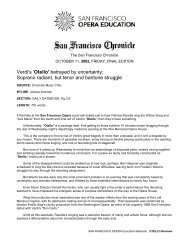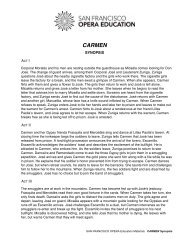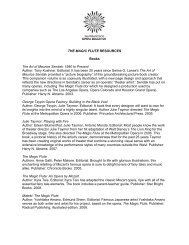You also want an ePaper? Increase the reach of your titles
YUMPU automatically turns print PDFs into web optimized ePapers that Google loves.
Some people actually thought that TB was an inherited trait that showed up in people of<br />
creative talent, and that the sicker you were, the more talented you were. Or, in the<br />
reverse, that the more creative you were the sicker you would get, and that the fevers and<br />
fatigue of the illness helped people make better art. It was, in a word, glamorized and<br />
made almost fashionable. The spectre of TB is a constant presence in 19th century art. It<br />
shows up in operas other than <strong>La</strong> bohème, including Verdi's <strong>La</strong> Traviata, and in plays,<br />
poetry, novels and paintings. In reality it was a wasting disease with no known cure, and<br />
that the suffering was anything but glamorous. Sufferers were often isolated and prevented<br />
from working in certain types of jobs, or even from getting married. The symptoms of TB<br />
include immense tiredness, weight loss, fever, night sweats, chest pain, and persistent<br />
coughing that brings up blood. At the time, it almost always proved fatal.<br />
Treatment of the time was done by guess-work. Some physicians recommended<br />
rest and relaxation, some recommended fresh air and exercise, or even salt air for their<br />
patients. Infected people were often isolated in "sanatoriums." These were facilities that<br />
were set apart from crowded areas, like cities, and promoted exercise, fresh air, and rest<br />
for their patients. In 1882, Dr. Robert Koch, a German physician, was finally able to isolate<br />
the bacterium. For the first time, the cause of consumption was understood as a<br />
contagious disease that was spread through air contaminated by the coughing of an<br />
infected person. The first steps towards effective treatment and vaccination could now be<br />
taken.<br />
However, it was not until the middle of the twentieth century that major progress was made<br />
towards a cure, which was developed in the 1940's. Of course, the best treatment is<br />
prevention. Currently, doctors are trying to encourage prevention prior to development of<br />
active TB. Preventative medicine includes good nutrition, rest, exercise, periodic testing,<br />
and avoiding close and continued contact with a person who is sick with TB. Coming into<br />
contact with a person who has TB does not necessarily mean that you will also get sick.<br />
Our bodies fight off germs every day. Only a quarter of the people who are exposed to TB<br />
actually become infected, and only a small portion of those people actually get sick.<br />
18


